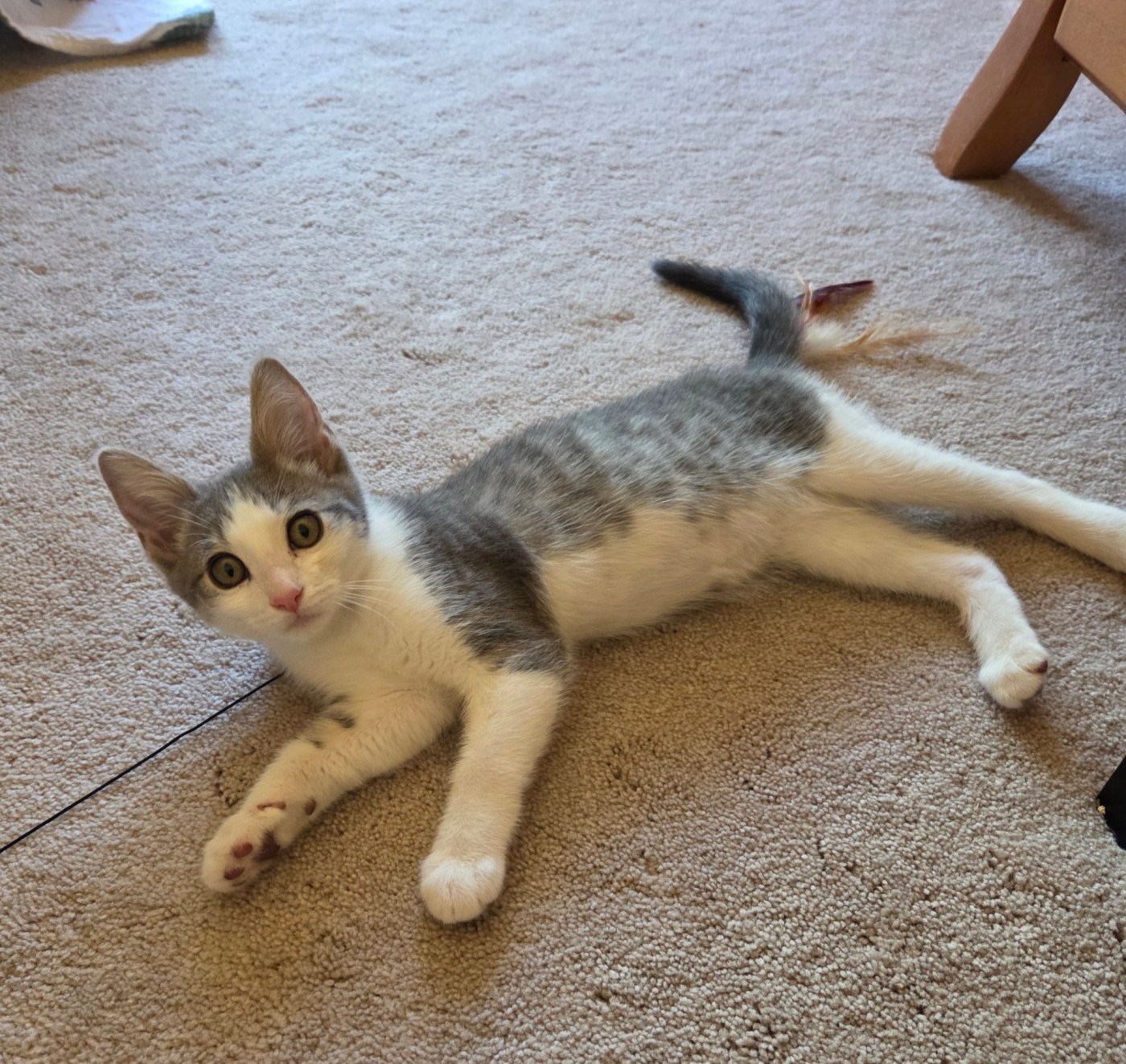
It’s 5:45 a.m. Time to rise and shine! Not to make my coffee, mind you, but to feed cats: two of my own waiting at the bedroom door and the “guest” cozy in her enclosed playpen. My cats eat first, and after they’re satisfied, I head to the playpen in the guest bedroom/office. I raise the sheet covering the enclosure, and there’s the cutest gray- and white-striped kitten. She’s at the mesh door staring at me expectantly, gently mewing. We’ve been together for two weeks now, and she knows the routine, especially when it comes to food. I open the zipped playpen door, and she runs out, tail up, looking for the telltale mat and saucer. I put them on the floor, and she begins eating heartily. As she’s eating, I pet and talk to her. She’s purring. After breakfast, I play with her a bit, and, finally, I can get to my own morning routine.
Related Articles
Why are squirrels chewing holes in a San Jose garden’s irrigation lines?
California postal workers ask, ‘Who let the dogs out?’
Why reptiles, amphibians make great pets
Wild turkeys roam freely in Bay Area suburbs, but where exactly are they from?
Why are my cats having trouble adjusting to new catio?
I’ve been volunteering at Marin Humane for about 18 months, feeding bunnies and cleaning their enclosures. I chose rabbits because I didn’t know much about them, and I’ve learned a lot. My real expertise, however, is with cats. For 40 years, I’ve privately rescued, fostered and adopted out more than 100 cats and kittens. So, about eight months ago, I signed on to foster through Marin Humane.
For this seventh go-around, I asked the animal care staff if they needed fosters for the many feral kittens that were coming in. I felt up to the challenge. No hesitation from them: “Yes!” A litter had come in about a week prior, so I went and took a look. On the upper lefthand corner cage, the sign read: “Bites, strikes, possible health issues.”
“OK, I’ll take her!” I said, hoping my alleged “kitty whisperer” talents would kick in.
But, besides talents, I’d done some research — it’s amazing what you can learn on YouTube — to prepare myself for new challenges. I was in for the long haul.
I followed the instructions and my instincts, and after a couple of days, the kitten allowed me to pet her as she ate. After a couple more, she was seeking out my affection, especially around feeding time. Now, Molly is a sweet, playful, social girl, indistinguishable from home-raised kittens. The transformation was truly amazing! Now, I’m working on getting her comfortable around other humans.
To see Molly go from “one of the most feral kittens” Marin Humane had taken in to this playful, attention-seeking lovebug has been incredibly rewarding. Prior to the 1980s, a kitten like Molly probably would have been euthanized. Foster care programs in the United States began appearing at that time, as shelters sought ways to improve animal care and increase adoption rates. Fostering offered a solution to the limitations of shelter space and resources and provided animals with a more comfortable and less stressful environment; volunteers and shelter staff offered temporary homes, socialization and rehabilitation for animals awaiting adoption.
Now, fostering has become an integral part of animal sheltering. Challenges remain, of course, like staffing, volunteer recruitment and available resources, but foster programs continue to play a crucial role in animal welfare. So many lives, including Molly’s, have been saved as a result of fostering. I encourage anyone with a love of animals, available time, space and a fair amount of patience to consider fostering. You will make a difference in an animal’s life, as well as in your own!
You don’t have to have experience fostering an animal to try it out. Marin Humane provides plenty of guidance, along with all the food and supplies you and your little charge will need. To learn about fostering an animal with Marin Humane, visit marinhumane.org/get-involved/volunteer/foster-program.
Teresa Colyer is a volunteer with Marin Humane, which contributes Tails of Marin and welcomes questions and comments from the community. Visit marinhumane.org, find us on social media @marinhumane or email [email protected].